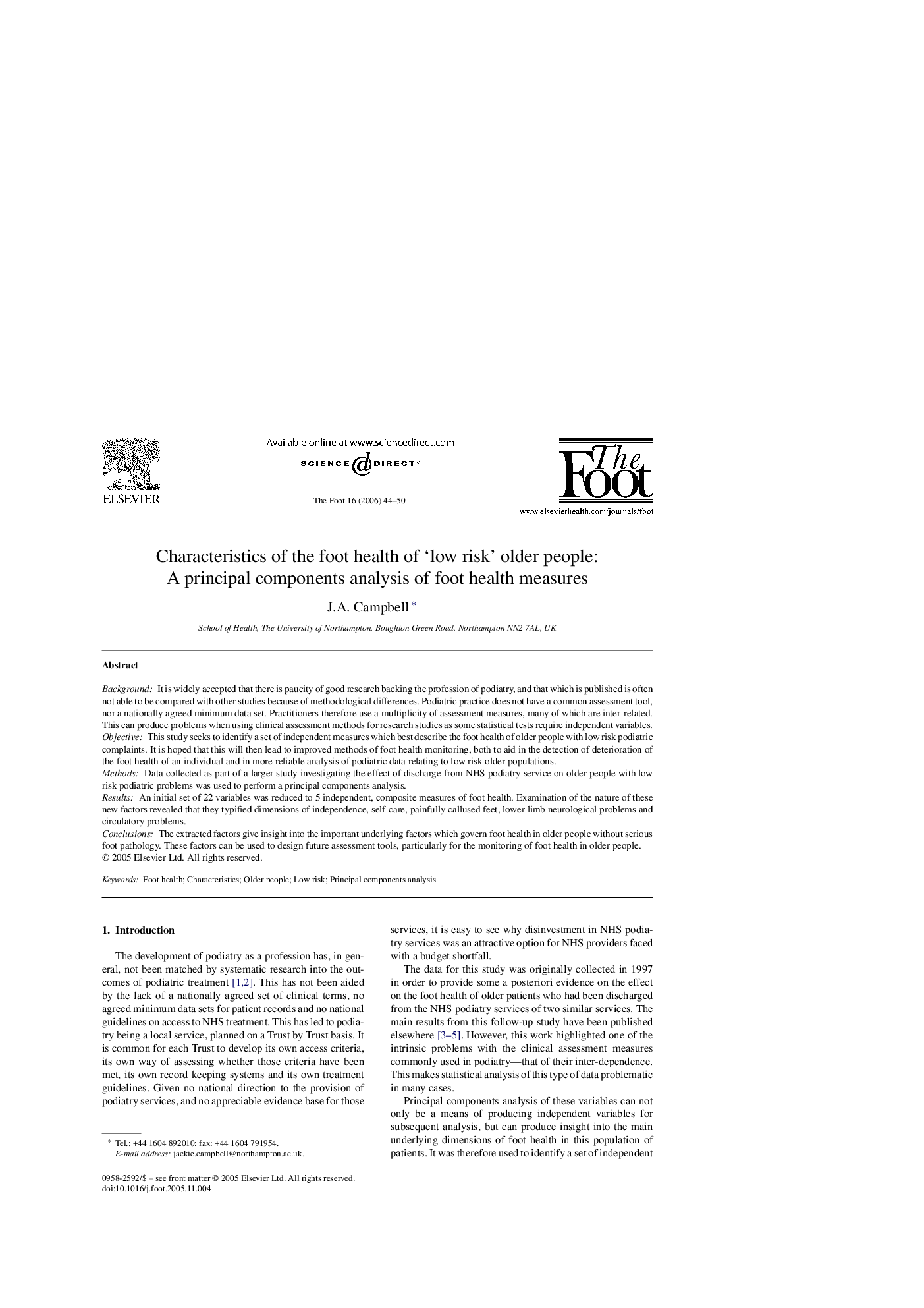| Article ID | Journal | Published Year | Pages | File Type |
|---|---|---|---|---|
| 2713734 | The Foot | 2006 | 7 Pages |
BackgroundIt is widely accepted that there is paucity of good research backing the profession of podiatry, and that which is published is often not able to be compared with other studies because of methodological differences. Podiatric practice does not have a common assessment tool, nor a nationally agreed minimum data set. Practitioners therefore use a multiplicity of assessment measures, many of which are inter-related. This can produce problems when using clinical assessment methods for research studies as some statistical tests require independent variables.ObjectiveThis study seeks to identify a set of independent measures which best describe the foot health of older people with low risk podiatric complaints. It is hoped that this will then lead to improved methods of foot health monitoring, both to aid in the detection of deterioration of the foot health of an individual and in more reliable analysis of podiatric data relating to low risk older populations.MethodsData collected as part of a larger study investigating the effect of discharge from NHS podiatry service on older people with low risk podiatric problems was used to perform a principal components analysis.ResultsAn initial set of 22 variables was reduced to 5 independent, composite measures of foot health. Examination of the nature of these new factors revealed that they typified dimensions of independence, self-care, painfully callused feet, lower limb neurological problems and circulatory problems.ConclusionsThe extracted factors give insight into the important underlying factors which govern foot health in older people without serious foot pathology. These factors can be used to design future assessment tools, particularly for the monitoring of foot health in older people.
